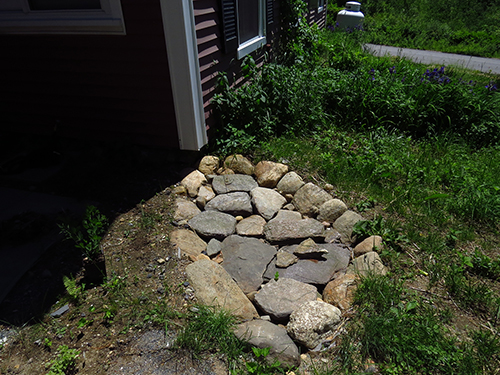
In the June issue, the Beacon published the first of a three-part series, with the Andover Conservation Commission answering questions on the importance of water quality to local residents and visitors, and on our common role in assuring an abundant clean water supply in the future. That article began with an overview of Andover’s water bodies, their current status (pretty good, quality-wise), and some general observations about how quality can get compromised.
In this issue, the Conservation Commission focuses on what residents and visitors can do to help preserve our lakes, ponds, rivers, and streams. In August, the focus will be on lake-friendly boating and recreation practices.
Q: So what can we do to help maintain and enhance the quality of our local water bodies?
A: There are three important locations where our behavior can have a significant impact on water quality: in our homes, on our properties, and along the shorelines we use when we enter and leave the water.
Q: Let’s start with the home.
A: Because Andover, like virtually all New Hampshire towns of its size, does not have public sewerage, we’re all familiar with the septic-system form of waste removal. But for most of us, it’s an “out of sight, out of mind” issue – until something goes dramatically wrong. And when that happens, phosphates and other pollutants can drain into nearby waterbodies.
Some tips to keep in mind are offered by the New Hampshire Lakes Association in a brochure entitled Help Protect New Hampshire’s Lakes. These tips include:
-
Conserve water, so the possibility of nutrients leaking into nearby waterbodies is decreased.
-
Use cleaning products containing no phosphates.
-
Be careful what you flush. Avoid material that is not easily biodegradable, and products (like paint, bleach, toilet deodorizers) that can kill the good bacteria in your system that break down waste.
-
Compost your kitchen waste. Using a garbage disposal can overburden your system.
-
Pump your septic system regularly.
-
Have your system inspected by a licensed inspector.
Q: And what about good property-management practices?
A: As noted last month, we all live in a watershed. So wherever we live, what we do on our property has the potential to impact the quality of our lakes, ponds, and underground aquifers. Focusing on our impact on lakes and ponds, there are two “best practices” to keep in mind:
First, minimize landscaping. And second, manage stormwater runoff.
Under the first, four suggestions are offered by the New Hampshire Lakes Association. These are:
-
Keep native deep-rooted trees, shrubs, and groundcover. These need less attention than manicured lawns, help prevent erosion, and filter runoff before it reaches surface waters.
-
Reduce the size of grassy areas, and replace them with native plantings.
-
Don’t fertilize your lawn or use herbicides or pesticides.
-
If you must use fertilizer, herbicides or pesticides, use sparingly and according to the New Hampshire Shoreland Water Quality Protection Act.
As for managing stormwater runoff, the Lakes Association recommends these steps:
-
Reduce the amount of stormwater running off your property by, for example, collecting water from your roof in a rain barrel and watering your garden with it; creating a rain garden; replacing grassy areas with native plantings; and mowing grassy areas less often, so roots will grow deeper and absorb more water and nutrients. Other suggestions include revegetating bare areas to prevent erosion, placing crushed stone below downspouts and gutters; and installing “porous pavers” on driveways to allow water to soak into the ground.
-
Improve the quality of the stormwater running off your property by taking all the steps above, and also, in the winter, by using de-icing agents and sand on your driveways and walkways sparingly – and by sweeping up residues between storms and at the end of winter.
Q: Finally, how should we think about taking good care of a shoreline?
A: As the Lakes Association points out, “your shoreline can be an effective natural buffer system between the lake and the surrounding landscape.” Some simple dos and don’ts include:
-
Don’t dump sand or use other means to create new beaches.
-
Leave the shoreline and nearshore area in its natural state.
-
Restore altered shorelines.
-
Avoid attracting waterfowl.
-
Don’t bathe yourself or your pets in the water.
-
Don’t remove aquatic plants without a permit.
The reasons for emphasizing these behaviors are provided in detail in the Lakes Association’s brochure mentioned above, which can be found online at:
The text of the New Hampshire Shoreland Water Quality Protection Act can also be found online at: des.nh.gov/organization/divisions/water/wetlands/cspa/